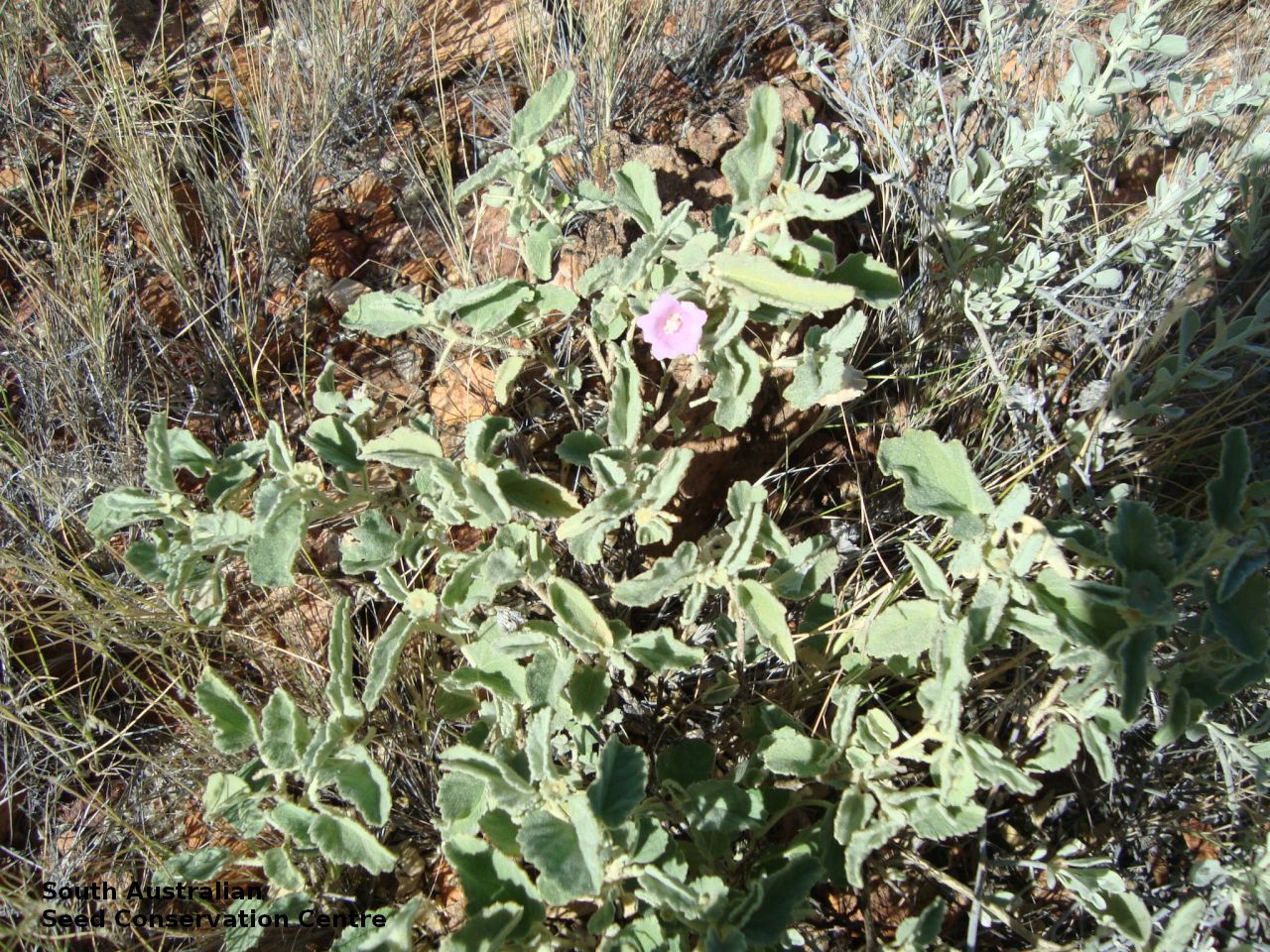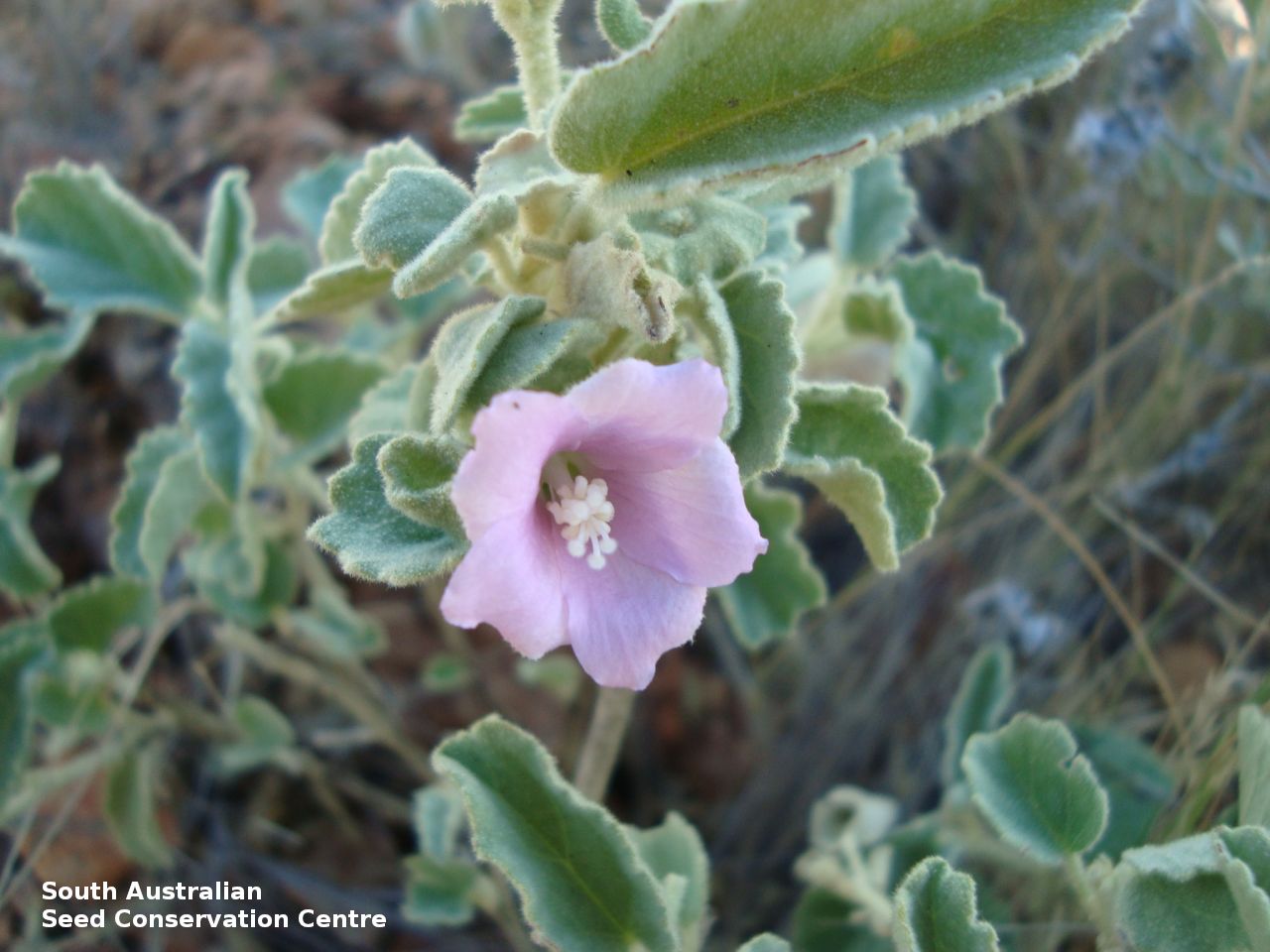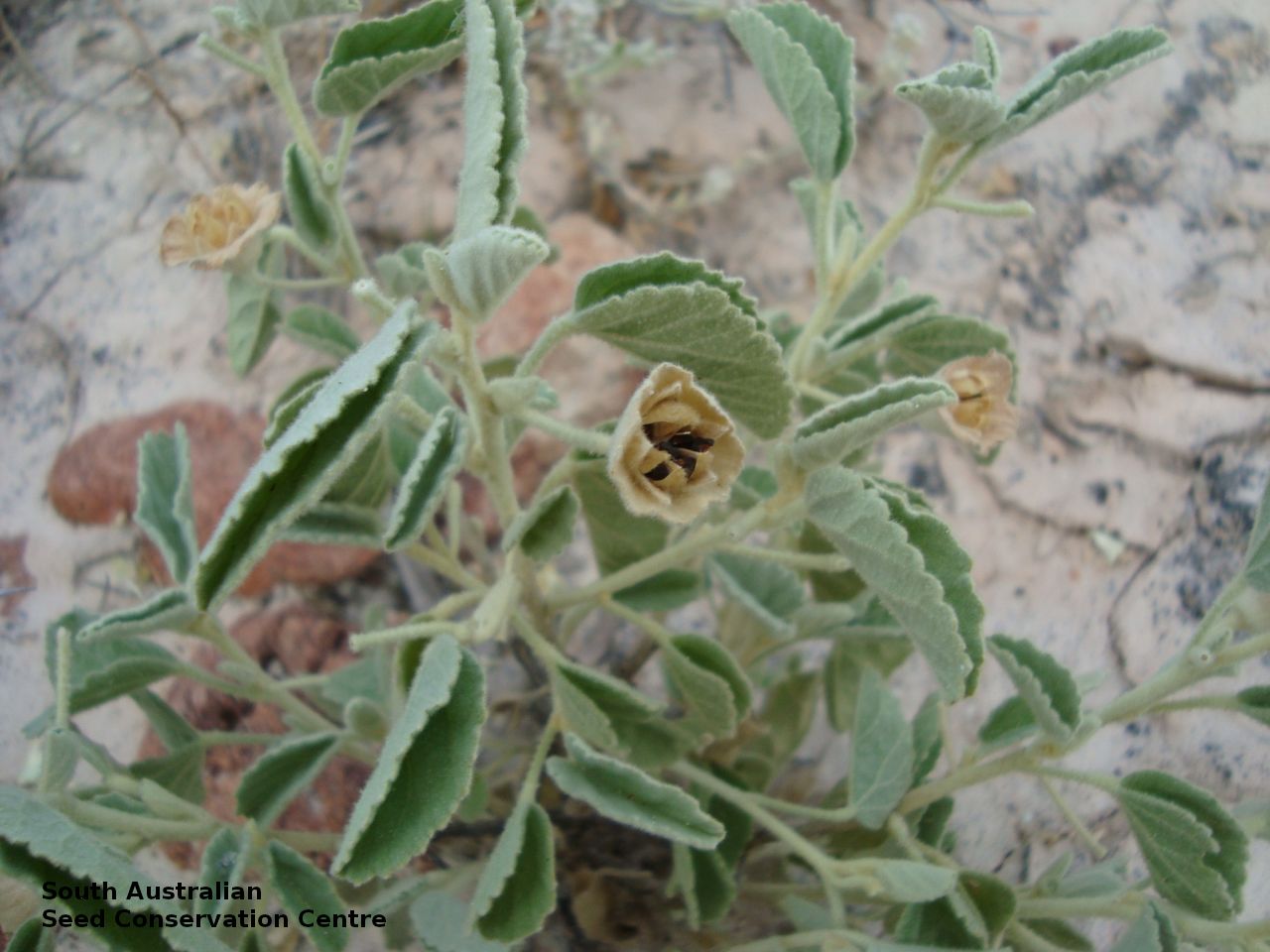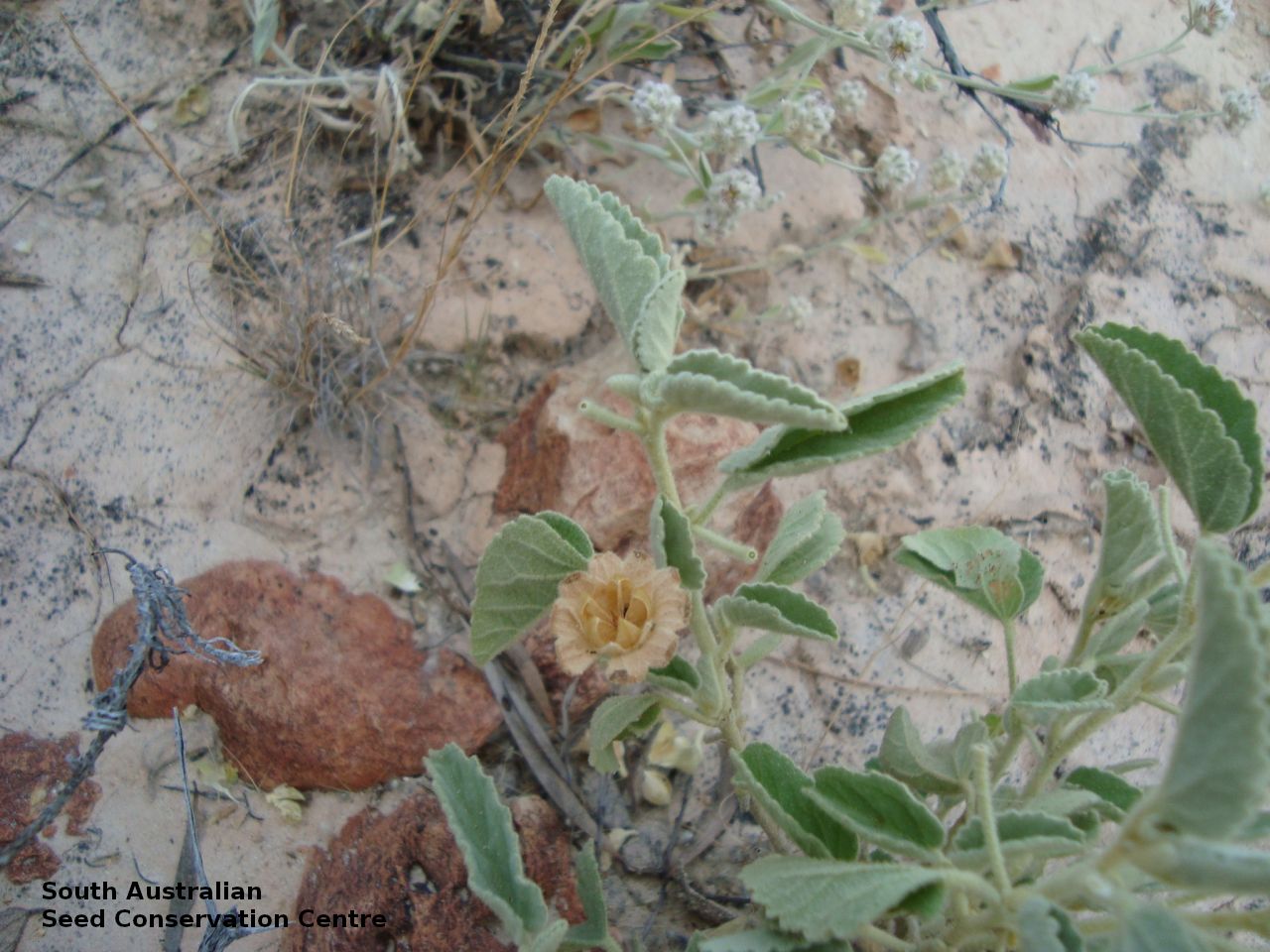





Botanical art
Common names
Hill Hibiscus
Sturt's Hibiscus
Etymology
Hibiscus, from the Latin 'hibiscum' which is from the Ancient Greek 'hibiskos', a name for mallow-like plant and possibly used by the physician Dioscorides for marshmallow plant. Sturtii, named after Captain Charles Napier Sturt (1795-1869), a British explorer of Australia.
Distribution and status
Found in the far northern part of South Australia, growing on rocky or gravelly ranges and breakaways. Also found in the Northern Territory, Queensland and New South Wales. Native. Rare in South Australia. Uncommon in the northern Territory. Common in the other States.
Herbarium regions: North Western, Lake Eyre
AVH map: SA distribution map (external link)
Plant description
Erect or spreading perennial subshrub to about 50 cm high. Leaves grey to grey-green; ovate to lanceolate or oblong-lanceolate, to 5 cm long; apex obtuse, covered in dense stellate-hairs. Inflorescence solitary with purple, pink or white flower. This variety differs from the other three varieties found in South Australia by having the epicalyx (extra segments or 'bracteoles' immediately below the calyx); segments 7 or 8; linear, triangular or ovate, united at the base into a cup. Flowering possible throughout the year. Fruits are hairy, brown papery globular capsule to 10 mm long, with the calyx conspicuous and splayed outward. Seed embryo type is folded.
Seed collection and propagation
Collect capsules that are drying off and starting to turn brown. The seed inside should be brown and hard. Place the capsules into a tray and leave to dry for a week. Then rub the capsules by hand to dislodge the seeds. Use a sieve to separate the unwanted material. Store the seeds with a desiccant such as dried silica beads or dry rice, in an air tight container in a cool and dry place. This species has physical dormancy that needs to be overcome for the seed to germinate (e.g. nicking or softening the seed coat).